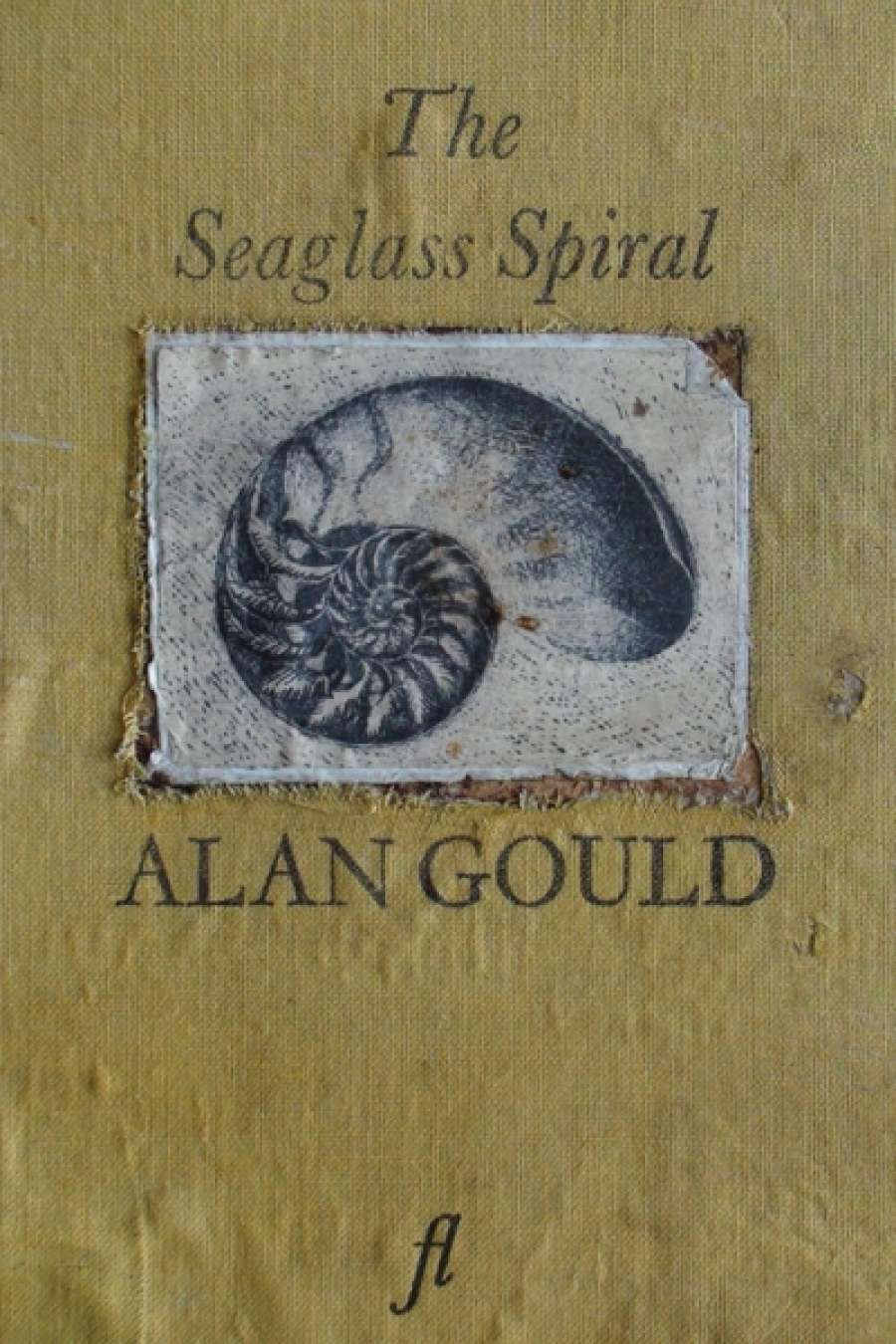
- Free Article: No
- Contents Category: Fiction
- Review Article: Yes
- Online Only: No
- Custom Highlight Text:
In his Introduction to The Seaglass Spiral, Finlay Lloyd reveals that an earlier version of this novel won an award for ‘best rejected manuscript’. It is a curiously back-handed compliment for a publisher to pay his author, and it is typical of an Introduction that seems cautious, even diffident, about its product.
- Book 1 Title: The Seaglass Spiral
- Book 1 Biblio: Finlay Lloyd Publishers, $28 pb, 299 pp, 9780977567751
Lloyd, a thoughtful cultural commentator, seems to imply that he doesn’t expect this book to make much money, and that this doesn’t bother him. At a time when every publicist gushes about how so-and-so’s book made him or her laugh, cry, and love it to bits, this honesty is refreshing, but also perturbing. Why do we need an Introduction? To prepare us for some difficult experience? Why not let the work speak for itself?
We are told that The Seaglass Spiral ‘dances between fact and fiction’, but once we are into the book, helped by the collage of family portraits in the end pages, it is apparent that the story is fiction based on memoir and family history. Nothing new about this: other Australians have done similar things, notably Brian Castro. Where fact stops and fiction starts, probably only Gould knows for sure. For the reader, it doesn’t matter.
On the first page, our hero, Ralf Sebright, just turned fifty, is drowning. It seems to be not altogether horrible (‘how fabulous! The sea’s ceiling, like a dress of silver silk.’). Clearly, this Ralf is a poet. Then there is a flashback to how he came down to the beach with his love of twenty years, Susan Ravenglass. He has given her a brooch in the shape of a shell, the Seaglass Spiral, that symbolises the union of their families and their DNA. The couple converse in a way I have never heard anyone converse (‘Even the most inadvertent inheritances are hived with story’) – but, hey, this is fiction, and Ralf’s a poet.
So far, so acceptable. But now the flashbacks really get cracking. We are off into the past, hurtling along on Gould’s time machine, going back to long before Ralf and Susan were even a twinkle in anyone’s eye, to apparently significant moments in the lives of their forebears, and the flashbacks go on and on for a full third of the book. I couldn’t keep up. Who were all these great-grandparents, uncles, and aunts? It was like someone flicking the pages of a huge photograph album. I longed for a family tree.
Not that there aren’t some wonderfully vivid and playful moments here. Gould (a seasoned and distinguished poet and novelist) does have an excellent eye and ear for the cameo. He is also good at poignant understatement, such as the moment when Ralf’s parents, stationed in India, lose a baby boy: ‘The birth certificate, which was red, and the death certificate, which was black, arrived with the postman on the same day, and for a period one was aware that Colonel Sebright and his attractive wife were both bearing up.’ But the charm of the language does not make up for the fact that we are adrift in a choppy narrative with nothing sustained enough to grasp at. It is exceedingly hard going. And the sections of story that might have produced the most dramatic results, such as Susan’s mother’s Holocaust history, are kept reverently at a distance and not allowed fiction’s full play. Perhaps this is the price for being scrupulous about your sources. If I had not been asked to review this book, I might have given up reading it.
But I persisted. Was I rewarded? Well, things do get a little easier once Ralf and Susan are born, but again you have to wade through a third of the book to get there, and it does not amount to Tristram Shandy-like fun. And then there is a moment of huge relief when young Ralf goes to an English school and gets relentlessly bullied. Not that we want Ralf to suffer. But we do want a character who is feeling real pain, bafflement, a sense of the crazy injustice of life. And at last we have got one.
There is a sense of authenticity, too, about Ralf’s early struggles to connect with girls. Somewhat improbably, he becomes a chick magnet at university when he discovers student protest (I always thought power was the aphrodisiac, not politics) but still cannot make any emotional connection with his conquests. I felt for the poor girl entwined ‘squid-like around his upper torso’.
Meanwhile, Susan is developing into an eccentric enigma, an artist and book nerd of considerable intelligence and attraction but no dress sense, chastely courted by other eccentrics and the odd creep, but, in the age of sexual revolution, somehow surviving to the age of thirty as a virgin because she just isn’t interested in sex. Finally, after much poetic and political argy-bargy, they meet. No surprise that these two misfits are soul mates. We are five-sixths into the novel by now, and the rest is a brisk scramble of mutual adulation, Ralf’s success as a writer, and a cluster of births and ancestral deaths.
In the end, what frustrates me most about The Seaglass Spiral is not the lopsided way Gould has chosen to tell his story. It is the fact that, after so much immersion in the family genes, I still can’t tell what strands or traits of character came from whom, in either Ralf, Susan, or their curiously undelineated children. It feels as if too much has disappeared up the spiral.


Comments powered by CComment